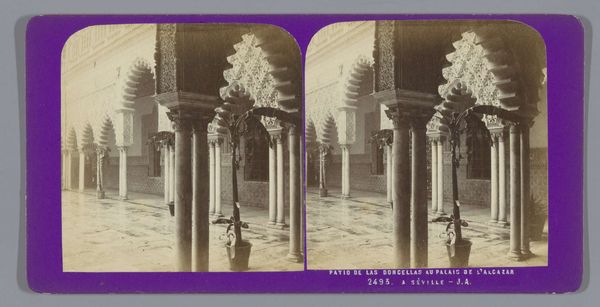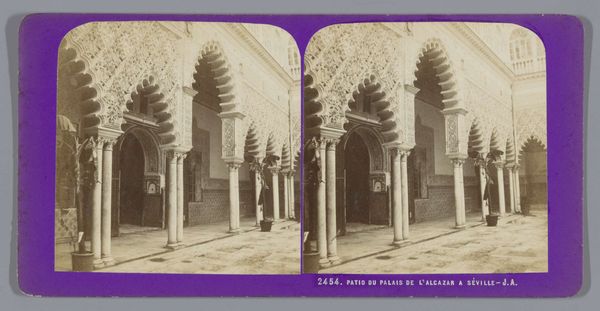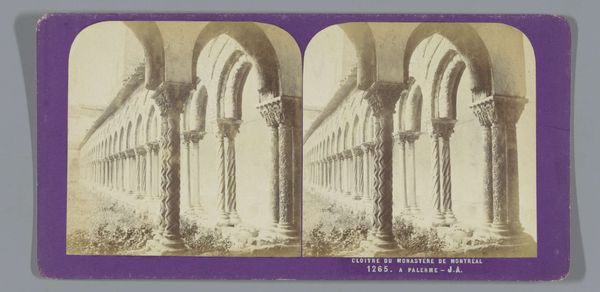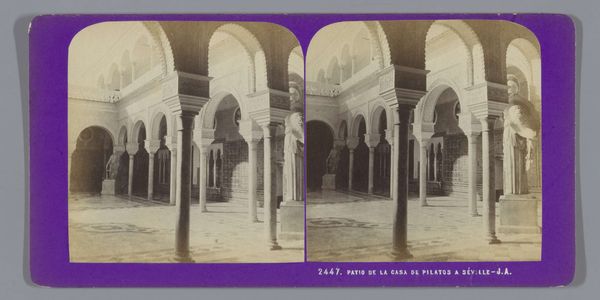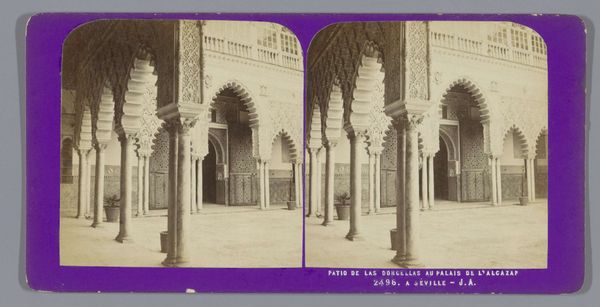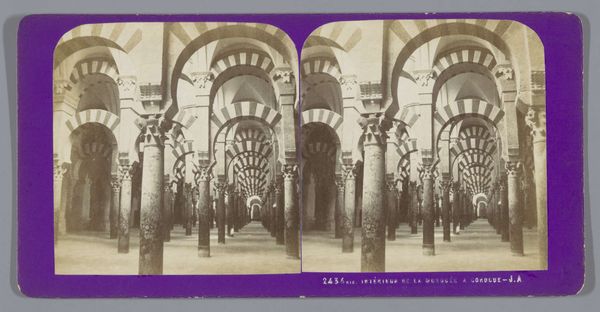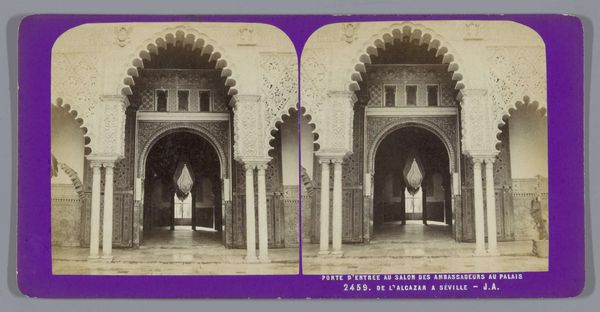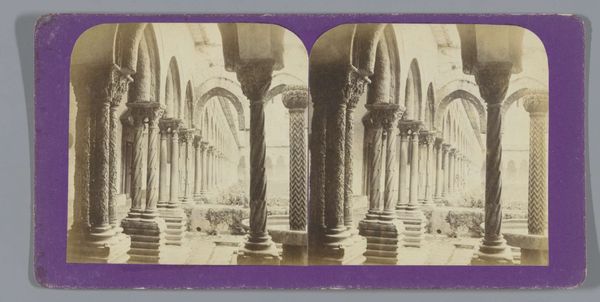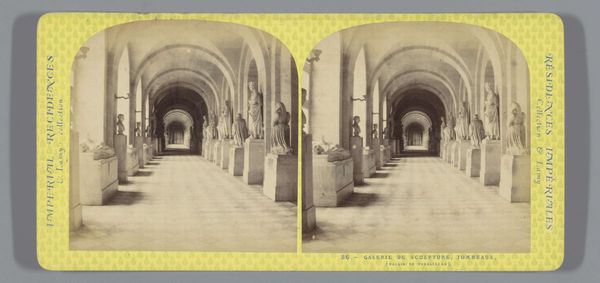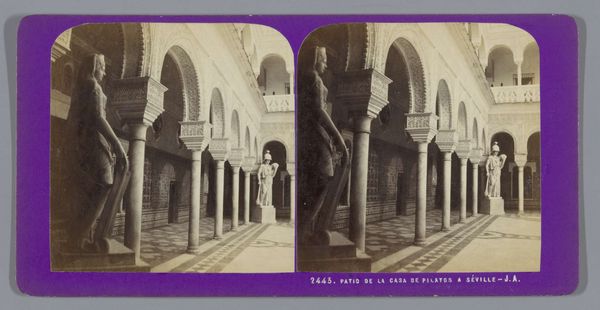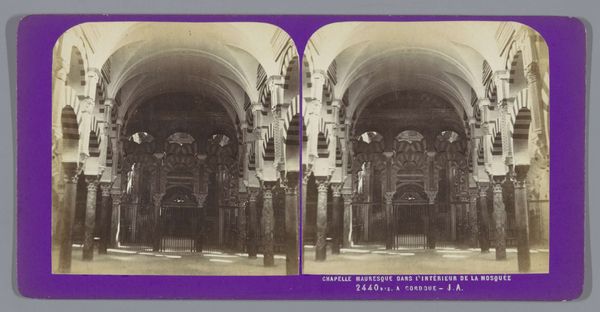
photography, architecture
#
landscape
#
photography
#
arch
#
islamic-art
#
architecture
#
realism
Dimensions: height 85 mm, width 170 mm
Copyright: Rijks Museum: Open Domain
Curator: This is "Binnenplaats van het Alcazar in Sevilla," a photograph taken by Jean Andrieu between 1862 and 1876. It captures a courtyard in the Alcázar of Seville. Editor: It feels austere, almost haunting. The black and white tones enhance the repetition of arches, the light reflecting on the marble-like floors. Curator: The photograph documents the labor invested in the Alhambra's architectural style of arches and small columns. How was the stone sourced? Who were the craftsmen shaping this space, merging Islamic motifs with later Christian additions after the Reconquista? The plant, centered and potted, seems rather forlorn and trapped. Editor: For me, the arches create a symbolic passage, doorways to a sacred space where water might once have flowed. Those repetitive arches speak volumes about the endurance of cultural memory. It’s interesting how the space remains relatively uncluttered. Do you feel like that empty, reflective ground contributes to the scene? Curator: Absolutely. The wet stone reflects the labor of cleaning and maintaining the courtyard, indicating a desire to maintain power. Also the production of such reflective stone through labor is what’s amazing here! The repetition you noted evokes labor, skill, and the organization needed to complete these many architectural segments. It speaks to me of grand, state-sponsored artisanship. Editor: And look how the architecture itself becomes a symbolic script, a story told through shapes and shadows that has survived centuries. What was originally intended as an Islamic residence continued to gain prominence as Christian royalty assumed occupation, revealing how spaces carry stories and histories far beyond their original intentions. The Alcázar is an emblem of shifting power dynamics rendered visually. Curator: And that visual power has to be extracted via processes—artisanal, industrial, photographic, distributing it in spaces such as our galleries and personal collections. Each repetition is like a new interpretation built from old labors. Editor: Indeed, viewing it reminds me of our ever present conversation between past iconography and contemporary life. Thank you for drawing attention to its history! Curator: A good way to look at what the hands of humans accomplish, for better and for worse!
Comments
No comments
Be the first to comment and join the conversation on the ultimate creative platform.
